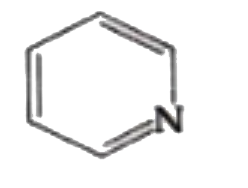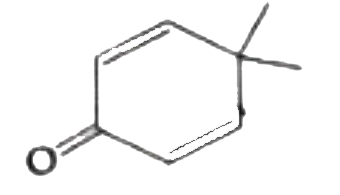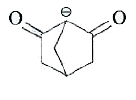Which of the following molecules is least resonance stabilised?




The correct Answer is:C
To determine which molecule is least resonance stabilized, we need to analyze each of the given molecules step by step.
Step 1: Identify the Molecules
We have four different molecules to analyze. Let's denote them as A, B, C, and D.
Step 2: Analyze Molecule A
Molecule A is an aromatic compound. Aromatic compounds are known for their resonance stabilization due to the delocalization of π electrons across the ring structure.
Conclusion for A:
- Molecule A is resonance stabilized.
Step 3: Analyze Molecule B
Molecule B contains a nitrogen atom and has double bonds. The presence of the nitrogen allows for resonance structures to form as the double bonds can shift, creating different resonance forms.
Conclusion for B:
- Molecule B is also resonance stabilized due to the ability of the nitrogen to participate in resonance.
Step 4: Analyze Molecule C
Molecule C has double bonds and an oxygen atom. The oxygen can pull electrons towards itself, allowing for resonance structures to be formed. However, there is an sp³ hybridized carbon atom present, which disrupts the conjugation.
Conclusion for C:
- While there is some resonance, it is significantly reduced due to the sp³ hybridized carbon, which breaks the conjugation. Thus, it is less resonance stabilized compared to A and B.
Step 5: Analyze Molecule D
Molecule D is another aromatic compound similar to Molecule A. Like Molecule A, it will have resonance stabilization due to the delocalization of electrons.
Conclusion for D:
- Molecule D is also resonance stabilized.
Final Conclusion
Among the analyzed molecules, Molecule C is the least resonance stabilized due to the presence of an sp³ hybridized carbon atom, which disrupts the conjugation necessary for effective resonance.
Answer: The molecule that is least resonance stabilized is Molecule C.
---
We have four different molecules to analyze. Let's denote them as A, B, C, and D.
Molecule A is an aromatic compound. Aromatic compounds are known for their resonance stabilization due to the delocalization of π electrons across the ring structure.
- Molecule A is resonance stabilized.
Molecule B contains a nitrogen atom and has double bonds. The presence of the nitrogen allows for resonance structures to form as the double bonds can shift, creating different resonance forms.
- Molecule B is also resonance stabilized due to the ability of the nitrogen to participate in resonance.
Molecule C has double bonds and an oxygen atom. The oxygen can pull electrons towards itself, allowing for resonance structures to be formed. However, there is an sp³ hybridized carbon atom present, which disrupts the conjugation.
- While there is some resonance, it is significantly reduced due to the sp³ hybridized carbon, which breaks the conjugation. Thus, it is less resonance stabilized compared to A and B.
Molecule D is another aromatic compound similar to Molecule A. Like Molecule A, it will have resonance stabilization due to the delocalization of electrons.
- Molecule D is also resonance stabilized.
Among the analyzed molecules, Molecule C is the least resonance stabilized due to the presence of an sp³ hybridized carbon atom, which disrupts the conjugation necessary for effective resonance.
Similar Questions
Knowledge Check
Which of the following ions is the most resonance stabilised?
AEthoxideBPhenoxideCButaxideDIsopropoxideWhich of the following compound is not resonance stabilized ?
A B
B C
C D
D
Which of the following carbanions are not resonance stabilized?
A B
B C
C D
D
Which of the following is pair of resonance structure?
View SolutionWhich of the following molecules is expected to have the greatest resonance stabilisation ?
View SolutionWhich of the following molecules is expected to have the greatest resonance stabilization?
View SolutionWhich of the following molecules is expected to have the greatest resonance stabilization ?
View SolutionWhich of the following molecules does not show any resonating structures?
View Solution